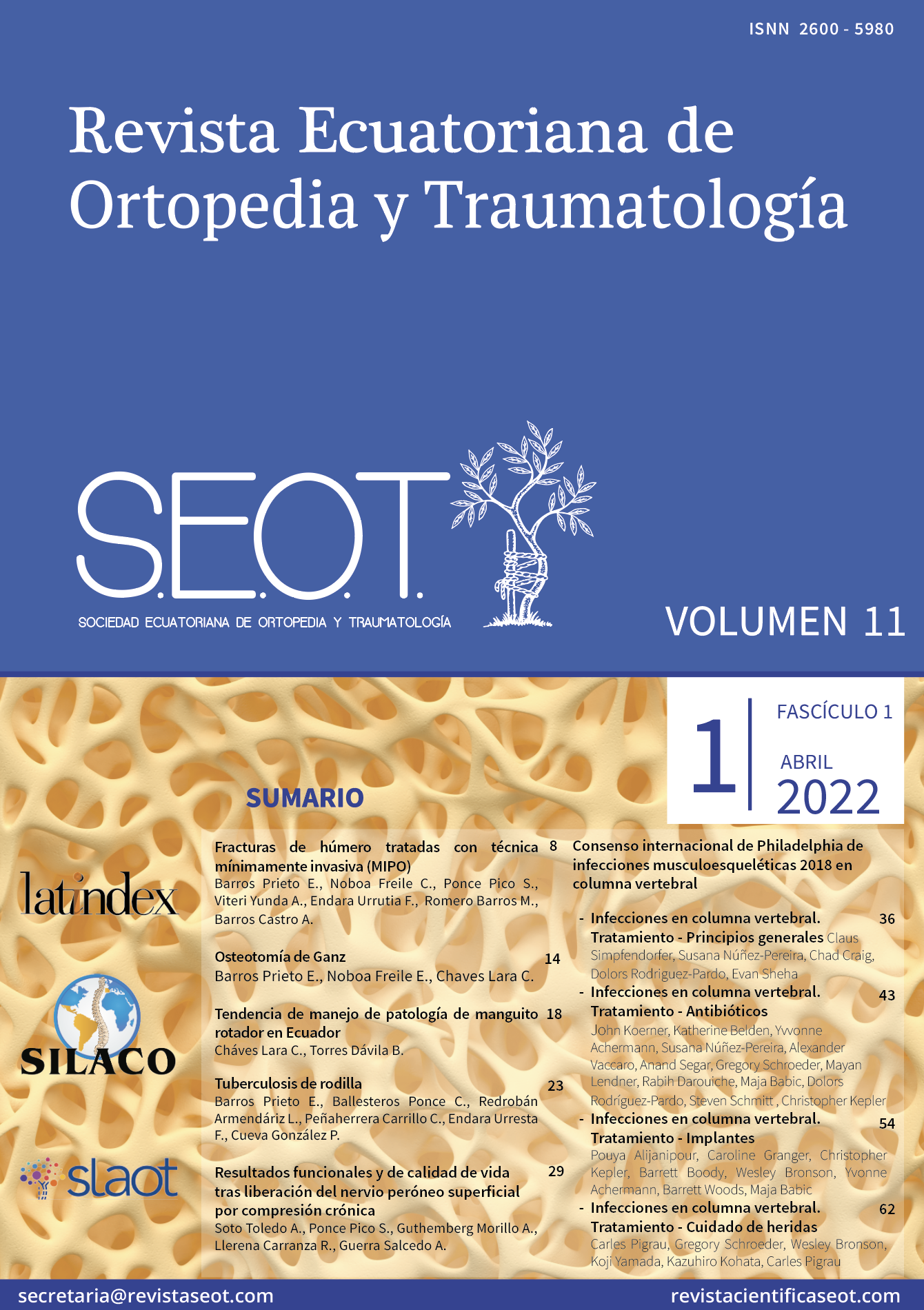Functional outcomes and quality of life a"er release of the superficial peroneal nerve due to chronic compression
Main Article Content
Abstract
We present the case of a 39-year-old female patient with a history of left ankle fracture AO 44 B1.2 in 2013 (Arbeitsgemeinshaft für Osteosynsthesefragen, for its acronym in German), treated with osteosynthesis. Four years after the surgical procedure, she presented increasing pain in the lateral aspect of her left leg and ankle, and is managed by several specialists in orthopedics and traumatology without finding clinical improvement in pain, progressing in intensity to 10/10 on the visual analog scale (VAS) that substantially limited her daily activities, decreased her quality of life and forced her to use a cane to get around; among the various diagnostic methodologies used to find the cause of the pain, these were normal, including electromyography. In 2019, she was evaluated by the authors and through a peripheral Superficial Peroneal Nerve (SPN) block test with lidocaine, probable compression secondary to post-surgical fibrosis was suspected, which was later verified during surgery. After surgical resolution, the patient shows disappearance of pain at rest, she occasionally manifests pain after prolonged periods of standing with maximum intensity VAS 3/10. Careful neurolysis with neurectomy and subsequent coverage of the proximal end of the SPN nerve segment through fibular tunneling is an optimal therapeutic measure for this type of patient, restoring functionality and improving their quality of life.
Article Details

This work is licensed under a Creative Commons Attribution-NonCommercial-NoDerivatives 4.0 International License.

